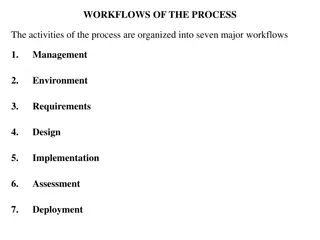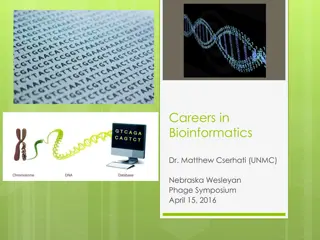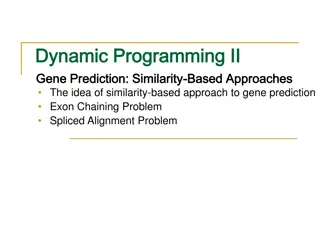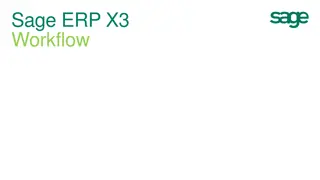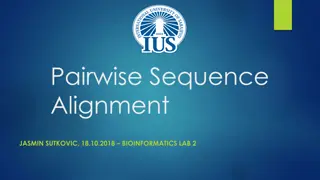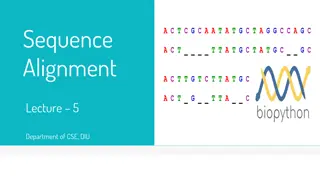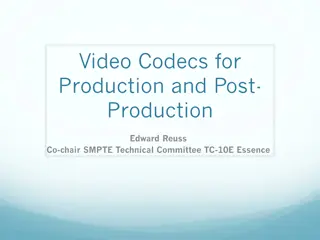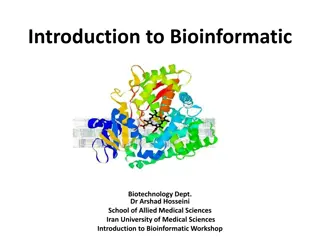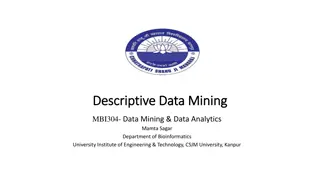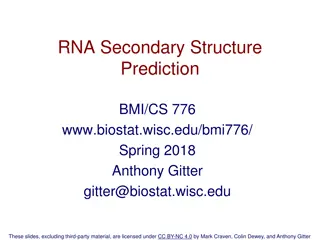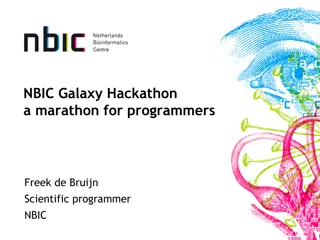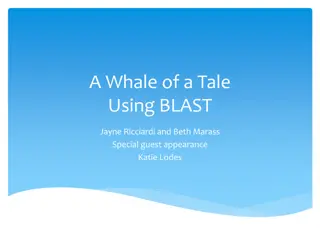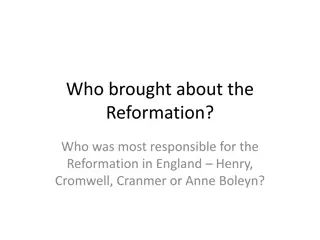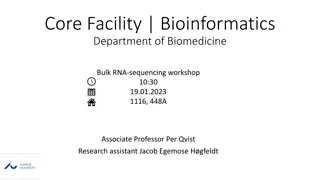Explore Cromwell and WDL Bioinformatics Workflows
Discover the world of Cromwell and WDL bioinformatics workflows at any scale, with emphasis on the scalability and flexibility of the execution engine. Learn about the Workflow Description Language and basic plumbing concepts. Unveil the multiple backends for maximum flexibility in Cromwell's execution engine and the two main ways to run Cromwell effectively. Dive into the production system involving genomes on the cloud, PAPI, and Cromwell server setups for efficient data processing.
Download Presentation

Please find below an Image/Link to download the presentation.
The content on the website is provided AS IS for your information and personal use only. It may not be sold, licensed, or shared on other websites without obtaining consent from the author. Download presentation by click this link. If you encounter any issues during the download, it is possible that the publisher has removed the file from their server.
E N D
Presentation Transcript
Cromwell & WDL Bioinformatics workflows at any scale Jeff Gentry Data Sciences Platform
The backdrop: data generation set to explode Quarterly output (in TBases) of the Genomics Platform Story begins here
Plenty of workflow solutions to go around So of course we decided to create a new one. Randall Munroe, XKCD https://www.xkcd.com/927/
Meet WDL + Cromwell Workflow language that humans can read/write Methods developers and biomedical scientists at large https://software.broadinstitute.org/wdl/ Execution engine that can Run on any platform (on-prem and on Cloud) Scale elastically based on workflow needs https://github.com/broadinstitute/cromwell
Workflow Description Language https://software.broadinstitute.org/wdl/
Basic WDL plumbing LINEAR CHAINING SCATTER-GATHER call stepA call stepB { input: in=stepA.out } call stepC { input: in=stepB.out } MULTI-IN/OUT Array[File] inputFiles scatter(oneFile in inputFiles) { call stepA { input: in=oneFile } } call stepC { input : in2=stepB.out2 } in1=stepB.out1, call stepB { input: files=stepA.out }
Cromwell execution engine Multiple backends for maximum flexibility Cromwell Local HPC Google GA4GH Funnel Coming Soon: AWS, Azure, Alicloud
Two main ways to run Cromwell One-off Simple self-contained command Server mode API endpoints More scalable Some devops needs Appropriate for production environments Call-caching! (aka ka-ching ) java -jar cromwell.jar \ run hello.wdl \ hello_inputs.json Appropriate for independent analysts
Our production system: Genomes On The Cloud GS data buckets PAPI Persistent Cromwell server ad-hoc GCE cluster (created on the fly) Broad on-premises systems Google Cloud NFS Zamboni workflow engine
Our development setup: on-prem + on-cloud GS data buckets Direct CLI REST API PAPI Persistent Cromwell server ad-hoc GCE cluster (created on the fly) Google Cloud
Example external implementation: Google wdl_runner Barebones implementation: Creates GCE VM Executes wdl_runner.py Sets up Cromwell Parses WDL workflow Submits jobs to PAPI Polls for completion Copies metadata & outputs to output path Destroys GCE VM GS data bucket ad-hoc GCE cluster (created on the fly) https://cloud.google.com/genomics/v1alpha2/gatk
Example external implementation: wdlRunR Direct integration with R: Submit workflows to Cromwell Use R values as inputs Monitor jobs for completion Retrieve data back into R Outputs Logs Job metadata https://github.com/seandavi/wdlRunR
The rest of the team Dan Billings Miguel Covarrubias Thibault Jeandet Chris Llanwarne Ruchi Munshi Khalid Shakir Kate Voss
Thanks! My Email: jgentry@broadinstitute.org User Forum: https://gatkforums.broadinstitute.org/wdl/categories/ask-the-wdl-team More Information: https://software.broadinstitute.org/wdl https://www.github.com/broadinstitute/wdl https://www.github.com/broadinstitute/cromwell





